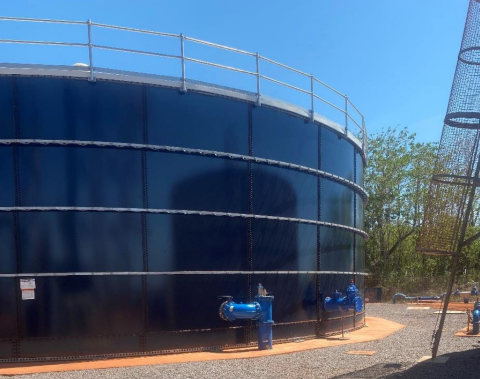
The project is funded by the Australian Government ($14,279,122) and Northern Territory Government ($3,569,780). Australian Government funding is provided through the National Water Grid Fund.

The Galiwin’ku ground level tank was built in 2021. It is part of the community’s drinking water infrastructure and provides water security to more than 2,000 people. Image credit: Power and Water Corporation, 2021.
Project overview
The project will replace ageing infrastructure to improve the water supply in Galiwin'ku, Northern Territory. It will also investigate options to address corrosive water and its effects on the condition of the infrastructure network.
The Galiwin’ku water network is in poor condition with significant water leakage. More than 80% of the extracted groundwater in the system is being lost, or 28 litres per second. This puts the Aboriginal community at risk of water supply failure.
Galiwin’ku’s source water also has a low pH and is acidic. This can cause metal contaminants like copper and lead to leach into the water supply. The corrosion affects:
- whether the water is healthy to drink
- how fast the distribution infrastructure degrades.
To secure a reliable and safe water supply for the community, the project will:
- upgrade and replace end-of-life asbestos water mains with new PVC (plastic) pipes
- undertake an assessment of options to correct pH levels.
By securing Galiwin’ku’s water supply, the project will support long-term planning and investment in services and facilities in the community. The work will enable future social housing development to reduce overcrowding. The project aligns with the following Closing the Gap Outcomes:
- employment opportunities (Outcomes 7 and 8)
- housing and essential services (Outcome 9).
Key project benefits
Read more
- Media release: $60.8 million towards securing water needs in remote First Nations communities
- Find out about First Nations water infrastructure projects

